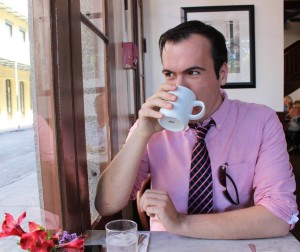Digging into diversity from the inside out
CWRU’s multiple definitions of diversity lack one core value
February 21, 2014
We are glad, in fact elated, that our university’s administrators “welcome discussions about diversity on our campus, and look forward to additional dialogue in the future” because if they didn’t we would no longer consider Case Western Reserve University a place of higher learning.
Dialogue, the fruitful exchange of ideas, is at the core of education. We learn through this dialogue and the comparison of individually distinct points of view. Without such conversation, we stagnate and our intellectual growth is stunted.
According to Vice President for Enrollment Management Rick Bischoff, “Diversity at Case Western Reserve encompasses factors well beyond race and ethnicity. In the realm of undergraduate admissions, additional diversity considerations include socioeconomic status, academic and extracurricular interests, and geography.”
We’re caught up on the phrase, “In the realm of undergraduate admissions.” What about realms outside that of undergraduate admissions? What about other realms of the university?
One of the greatest definitions of diversity we’ve ever encountered is a simple one: the presence of difference. Given this definition, CWRU is a relatively diverse place. There is no question that various forms of difference are present on our campus. The real question is how much difference there really is, and how much this difference is valued.
Our question is problematized more with the question of how we measure diversity. The Office of Undergraduate Admissions has posited a seemingly carefully considered list of criteria: “race, ethnicity, socioeconomic status, academic and extracurricular interests, and geography.” But why is this definition different than the university’s official definition, set forth in 2012-2015 Diversity Strategic Action Plan:
Diversity usually refers to representation (numbers) related to a wide range of human difference. The dimensions most commonly identified include gender and race/ethnicity. Diversity scholars have identified many other dimensions including, but not limited to age/generation, mental/physical abilities, sexual orientation, gender identity/expression, religion, family status, communication style, geographic location, and military experience. Another important dimension is immigrant status.
But to us, one key element is missing: diversity of thought. To be clear, we are not arguing against the need for racial, socioeconomic, and spatial diversity, but if there is no dialogue between these groups, then diversity at CWRU is merely a façade of fancy curtains concealing the shattered window of unbiased reality.
Executive Editor Tyler Hoffman’s response to Bischoff’s letter to the editor asked the following: “How open do you perceive the university to be about issues that matter most to you? When you speak your mind, do you expect to be heard? And when you ask an honest question, do you trust that it will be answered?”
After careful consideration, we believe writing well thought out answers to these three questions would be too laborious when the answer to each of them boils down to a simple “no” in the realm of campus diversity. Diversity is not tangible, but we argue you should know it when you see it, when you feel it and when you experience it.
By stating that Case Western Reserve welcomes further dialogue about diversity at the end of his letter to the editor, Bischoff rolled out a welcome mat that should have already been present. So we must ask, why did he feel that this principle required reaffirmation? If diversity is a true, inherent value of the university, shouldn’t the value of dialogue and the thoughts that inspire it go without being said?
Tyler Hoffman, executive editor, and Jacob Martin, senior opinion columnist, are both fourth-year undergraduates at Case Western Reserve University.


